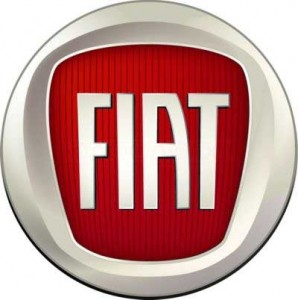A few years back, the movie, “Sliding Doors,” posed the question of how a seemingly small event could transform someone’s life – for actress Gwyneth Paltrow, it was a matter of just missing her rush hour train home.
For Chrysler, it could have been the 11th-hour collapse of the proposed merger, two decades ago, with Fiat s.P.a. It wasn’t for lack of trying. The Italian automaker was actively wooing its erstwhile U.S. rival, and Chrysler’s charismatic CEO, Lee Iacocca, had won over virtually every notable backer.
The hold-out was Bob Lutz, today, Vice Chairman of General Motors, but then Iacocca’s top lieutenant. Convinced it would kill Chrysler, Lutz was able to scuttle the proposed alliance hours before it was to be formally announced – in the process, killing his own chance of being named Iacocca’s successor. Instead, Lido pulled in an outsider, Bob Eaton, who until then had run GM’s European operations. Ironically, in a series of twisted events that again have made the script for “Sliding Doors,” Eaton eventually found a new suitor in Germany’s Daimler-Benz. And we all know how that story played out.
From the Italian side, it might have been a good thing to have the Chrysler deal called off. In the years that followed, Fiat turned into the basket case of the European auto industry. By the beginning of this decade, it seemed as sickly as Chrysler does today. But since then, the Turin-based maker has staged a surprising recovery. And now, it’s being reported, it just may want to revisit an old romance.
Numerous sources are confirming talks between the two companies. Exactly how far those discussions have gone – and where they could go – is unclear, however. Might another merger plan be in development? It’s possible, several insiders say, though for the moment, something less extensive seems more likely.
The official word from Chrysler is that, “In today’s economic environment, talks are going on between companies in all industries – (and) ours is no different. Chrysler LLC as a matter of policy however, does not confirm or disclose the nature of its private business meetings. Beyond those partnerships and alliances already announced, Chrysler has no further announcements to make at this time.”
There’s been no comment at all from Fiat.
According to one well-placed source, the discussions actually date back to well before Chrysler fell into its current slump. With its star-crossed marriage to Daimler coming to an end, it became increasingly clear to management that they’d need help if they were to play in the increasingly tough auto market – especially when it came to dealing with ever-tightening emissions, fuel economy and safety standards.
Fiat, meanwhile, realized that as one of the smaller of the major automakers, it needed help improving its economies of scale.
So, several different issues have been discussed by Fiat and Chrysler representatives. There is the possibility of the U.S. maker producing a larger model for Fiat, using an Italian design. This could potentially provide a large car offering for Fiat’s Alfa-Romeo subsidiary, which has been struggling to plot out a return to the American auto market.
Chrysler finds such ventures extremely attractive. The automaker has already inked such an alliance with Nissan, which, among other things, is producing a small car for sale by Chrysler’s small Latin American dealer network. Chrysler, meanwhile, plans to build a replacement for Nissan’s big Titan pickup. And the U.S. automaker recently began assembling a version of its minivan for the German maker, Volkswagen.
Another potential area where Chrysler and Fiat have apparently been looking involves future “green” powertrain technology. Developing hybrids, plug-ins and electric vehicles is phenomenally expensive, so it could help to share the cost of the underlying hardware, then differentiate vehicle bodies.
Such moves are “logical,” said a senior Michigan-based source. He added that a full-blown merger is by no means out of the question, but cautioned that in the current environment, it is not something to be rushed into.
Both makers have their financial challenges. And while Chrysler has received a $4 billion loan from the U.S. government, it must still provide a solid plan, proving its viability, before the end of March. It is unclear if the government would require that money to be paid back immediately should Chrysler merge or be acquired by a foreign automaker. On the other hand, some government leaders would be pleased to see a merger that would shore Chrysler up.
During a visit to the Detroit auto show, last week, Senator Bob Corker, a Tennessee Republican, who voted against the bailout, said that as far as he’s concerned, Chrysler should either “merge or go away.”

